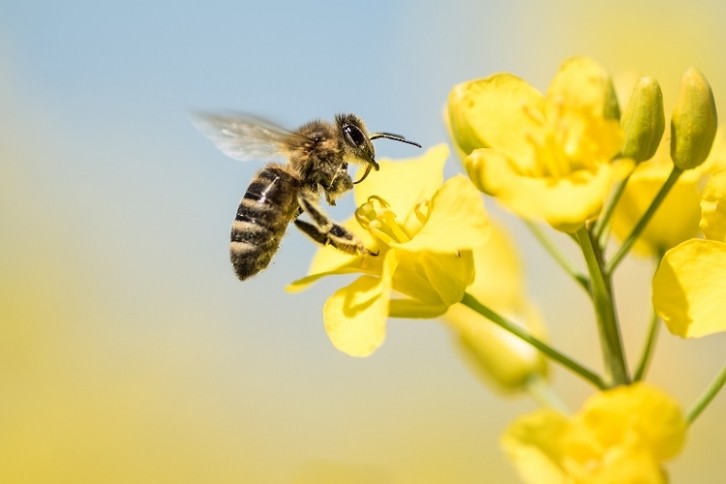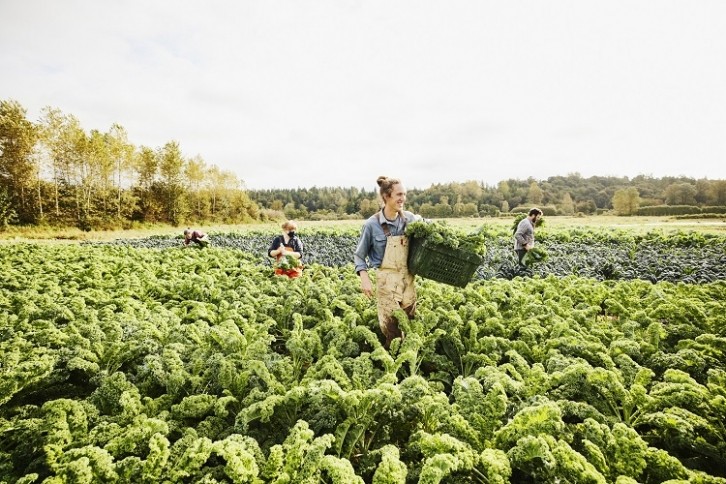Biodiversity loss is a significant challenge affecting not solely the way forward for meals safety, however the way forward for the planet, with scientists warning that the sixth mass extinction is already underway.
Moreover, the World Wildlife Fund (WWF) has said that in contrast to earlier extinction occasions, brought on by pure phenomena, the sixth mass extinction is pushed by human exercise, primarily a results of unsustainable use of land, water and power use, and local weather change.
“Within the EU, one in three species of bees, butterflies, and hoverflies face extinction, jeopardizing the pollination of 80% of crop and wild plant species important for meals manufacturing,” Annemarie Botzki, agriculture campaigner for client watchdog foodwatch, instructed FoodNavigator. “The European Fee reveals that half of the EU’s agricultural land is already experiencing a pollination deficit. Furthermore, Europe has witnessed a staggering decline of 600 million birds since 1980, impacting farming practices as birds function pure insect and pest controllers.”
Because of this, customers are being urged to modify from biodiversity-damaging meals to biodiversity-friendly meals.
Asking the massive query: which meals help biodiversity and which needs to be averted?
A current research trying on the biodiversity footprints of standard dishes from world wide sought to determine which elements are biodiversity-damaging and that are biodiversity-friendly.
How was the research performed?
To calculate the biodiversity footprint of every dish, the analysis group used crop and pasture space information along with information on threatened species from the Worldwide Union for the Conservation of Nature.
“Permitting environmentally acutely aware customers to know the impacts of their meals buying and consumption choices on the setting may cut back their environmental footprint by specializing in extra sustainable merchandise,” defined a spokesperson for the research.
Nonetheless, though the research did determine elements which pose a risk to biodiversity, the reply to the query of which meals are biodiversity-friendly and that are biodiversity-damaging is way from easy, and is more likely to go away customers with extra questions than solutions.
Which meals scored badly for biodiversity harm?
Maybe unsurprisingly, the research discovered that the biodiversity footprints of dishes containing meat have been considerably larger than these with out.
“Many of the meat available on the market comes from animals which are mass produced with intensive practices,” explains Ines Gendre from carbon offset firm, greenly, who was not related to the research.
However this doesn’t essentially imply that consuming meat can’t be sustainable.
“Consuming meat does not should be dangerous for the setting – a variety of it is determined by how the meat was sourced. Grass-fed beef, or beef from cows that spend their complete lives grazing pasture, is a sustainable meat to eat. In actual fact, ruminants like cows could be vital components of thriving, wholesome ecosystems,” provides Gendre.
Curiously, there have been a number of surprises, with rice and legumes each making it onto the checklist of meals with a excessive biodiversity-damaging footprint. The rationale for this? Rice and legumes are predominantly sourced from nations resembling India the place the crops are encroaching on biodiversity hotspots with already very excessive agricultural strain.
“India presents an ideal storm,” defined Roman Carrasco, one of many paper’s authors and an affiliate professor of organic sciences on the Nationwide College of Singapore. It has excessive ranges of biodiversity, together with many endemic species that may solely reside in very particular areas, mixed with “excessive ranges of these important areas being closely encroached by crops like rice, chickpeas, beans and lentils.”
Nonetheless, sustainably sourced legumes stay biodiversity pleasant and may, actually, supply environmental advantages.
“The origin of the beans or lentils you might be utilizing issues fairly a bit,” stated Carrasco. “Whereas legumes are ‘a superb crop’ by way of environment friendly land use and excessive dietary worth, they may very well be higher grown in much less biodiverse areas.”
Which meals scored higher for biodiversity harm?
Meals with the bottom biodiversity footprint, in accordance with the research, included starchy meals resembling potatoes. Potato manufacturing has a low carbon footprint because it requires much less land and water than many different greens, resembling cucumbers, spinach, cabbage, celery, corn, onions, leeks, carrots, broccoli, radishes, and brussels sprouts. Potatoes are additionally fairly a hardy vegetable and could be grown in most environments. This implies they are often efficiently grown away from areas the place biodiversity is beneath extreme risk.
One other nice profit to potatoes is their affordability and the truth that they’re grown in nations throughout the globe so broadly accessible to many.
Nonetheless, that’s to not say that different greens talked about above are dangerous for the setting, merely that they’ve the next carbon footprint than potatoes. The first cause for this being that they’re shallow-rooted greens and subsequently require frequent watering to forestall the soil round them drying out. Their larger footprint could be decreased if the greens are regionally and sustainably sourced.
The research additionally discovered wheat to have a decrease biodiversity footprint. That is excellent news for followers of bread, pasta, pastries and cereals, although the rising of wheat usually depends upon pesticide use, which is a big risk to biodiversity.
“The widespread use of pesticides in agriculture is a explanation for public concern, because of its impression on human well being and the setting,” explains foodwatch’s Botzki.
Briefly, that is an especially complicated challenge, however one factor is evident, we have to grow to be extra conscious of the place our meals comes from and select the biodiversity-friendly, sustainable choices the place attainable.
Why is biodiversity loss such a critical challenge?
Biodiversity is important for the processes, which help all residing issues, together with people. With out a variety of animals, vegetation and microorganisms, we’d not have the ecosystems we rely on to offer us with the air we breathe and the meals we eat.
The United Nations (UN) has described biodiversity as, “the net of life that we rely on for thus many issues – meals, water, drugs, a secure local weather, financial development, amongst others. Over half of worldwide GDP depends on nature. Greater than 1 billion individuals depend on forests for his or her livelihoods. And land and the ocean soak up greater than half of all carbon emissions.”
Moreover, it states that, “nature is in disaster,” with as much as a million species at present beneath risk from extinction.
The European Parliament has said that, “biodiversity, or the number of all residing issues on our planet, has been declining at an alarming charge in recent times, primarily because of human actions, resembling land use modifications, air pollution and local weather change.”
The United Nations has recognized world meals manufacturing as the first explanation for biodiversity loss, saying, “when land is transformed for agriculture, some animal and plant species could lose their habitat and face extinction.”



